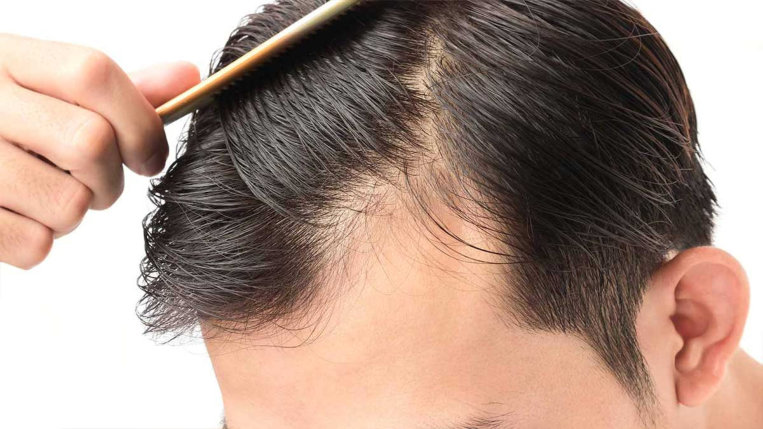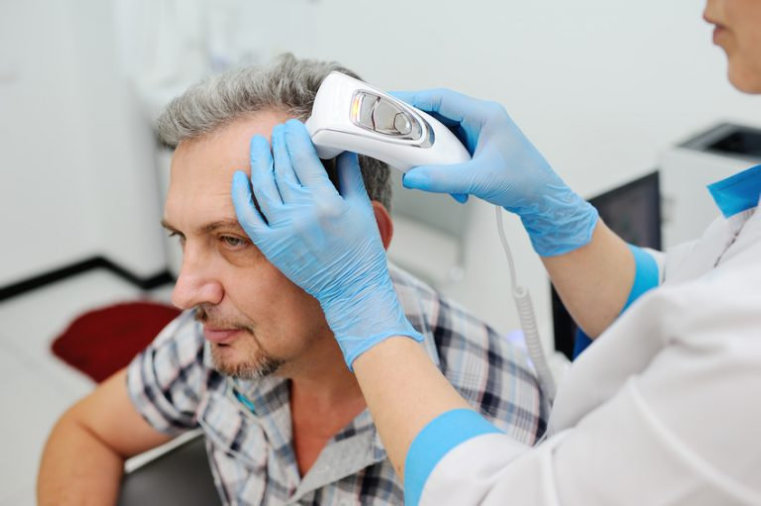ALOPECIA
The term alopecia was described by the French dermatologist Raymond Sabouraud and derives from the Greek alopex (fox), because this animal changes its hair twice a year.
The first symptoms of hair loss begin to be seen in the shower, on the comb or on the pillow. At the same time, it must be borne in mind that alopecia occurs due to certain systematic diseases, stress or nutritional deficiencies.

- You must bear in mind that alopecia is suffered progressively and continuously, with a loss of approximately 5%.
- In the male sex, with the fall or receding of the front hairline, producing the well-known receding hairline, it is followed by a lightening at the top and back, following the crown.
- In the case of women, alopecia presents in a different way, there is a loss and shortening with discoloration of the central parietal hair area.
- Alopecia progresses following a different pattern in men than in women, in men it is classified as Norwood-Hamilton and in the case of women the pattern is Ludwing according to the degree of baldness.
- The hair changes from a vital and strong hair to a new weaker and finer hair, this type of hair is known as “Miniturized Hair”.
- When hair loss is suffered in adolescence, we speak of an aggressive and progressive alopecia, hair loss being faster, producing follicular atrophy, lightening and miniaturization.

- We suffer from alopecia of this type when we go from vital, strong and dense hair to weak, microscopic and fine hair.
- The main cause of androgenic alopecia is found in a set of hereditary hormonal components, being more common in men than in women.
- Testosterone is responsible for this type of alopecia in men, being proandrogens in women, which produce hair thinning and loss.

- Hair growth in people is a continuous process. Our hair goes through phases of growth and rest of the hair.
- There are three phases of growth: growth, regression and rest. This process is not synchronized, so every day there are hairs that fall and others that are in the process of growth.
- The Hair Growth Phase or also called Anogen, the hair is in constant growth. Under normal conditions, 75% of the hair is in this phase, which lasts from 2 to 6 years.
- We must also consider that the speed of growth is very important, being in general terms 1 centimeter per month.

The person who wants to undergo a hair transplant must take into account that depending on certain characteristics such as age, sex, race, hair type… the results can vary significantly from one patient to another.
- Age: With patients up to 25 years of age, very good results are obtained since alopecia has just begun and the results are very positive.
- Sex: In the case of men it is much simpler than in women because alopecia is more localized in men, being more difficult to locate in women, each case will have to be studied to see the pattern it presents.
- Race: We will find the most positive results in races that have a very similar skin and hair color, as is the case with people of color. The best results will be obtained when the color of the skin and hair are similar.
- Hair Stability: In this case, the best patients are those who have a well defined area affected by alopecia, in this way the specialists will know the exact area where the transplant is performed.
- Density: The density of the hair also influences, the more density the donor area has, the more units can be extracted.
- Hair Type: In thick and curly hair they will give better results since we will need fewer units of hair to populate the affected area.
- Laxity: Patients with little elasticity will obtain better results applying the FUE technique.
- Before undergoing a hair transplant, it is important that the patient is aware of the treatment to which they are going to undergo and resolve all doubts, concerns, etc. from the first appointment, with the aim that the hair expert takes it into account so that they can can explain the possible results, advantages etc. since the transplant is for life.

The reconstruction of the frontal line is a specialty within hair surgery, which pursues a natural appearance taking into account the type of baldness, the age and the shape and type of the patient’s head.

The front line must have a natural appearance, so that the reconstruction of this area is done correctly, the hair must be placed at an angle of up to 60 degrees, this angle decreases on the sides. The type of hair that should be placed in this area is high density so that it gives a sensation of hair with volume and units of a single hair should be placed, as we move away from this area the units are 2, 3 and 4 hairs.
FIGHT ALOPECIA


It is important to go to a dermatologist or trichologist to rule out or confirm different pathologies that have to do with our alopecia.
Medecap Inform
Alopecia can be combated with medication, therefore, it is important that important decisions are made during the first symptoms.
Dr. Felicidad Espinosa Hair Surgeon